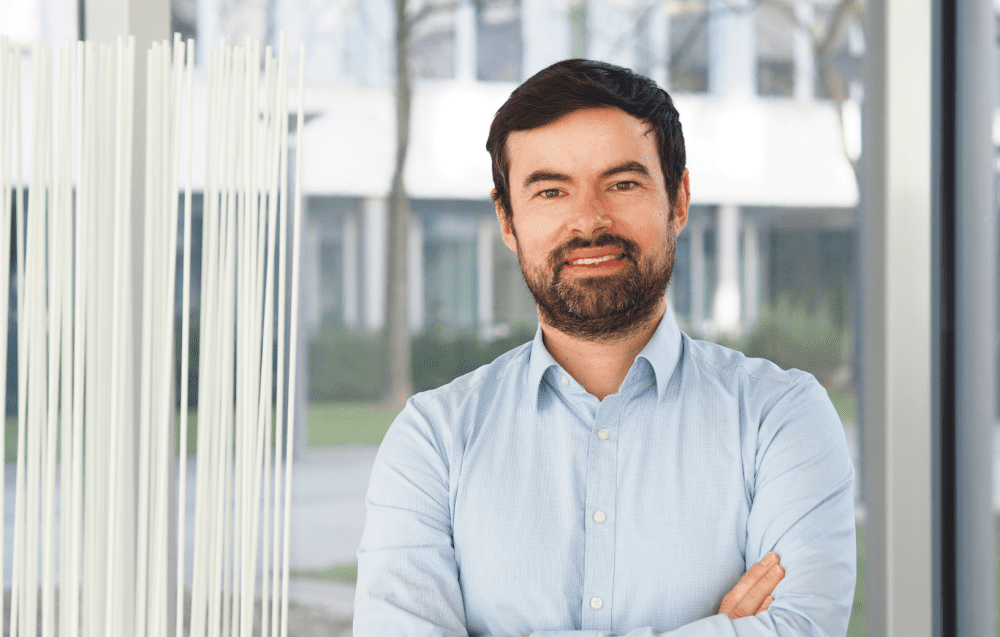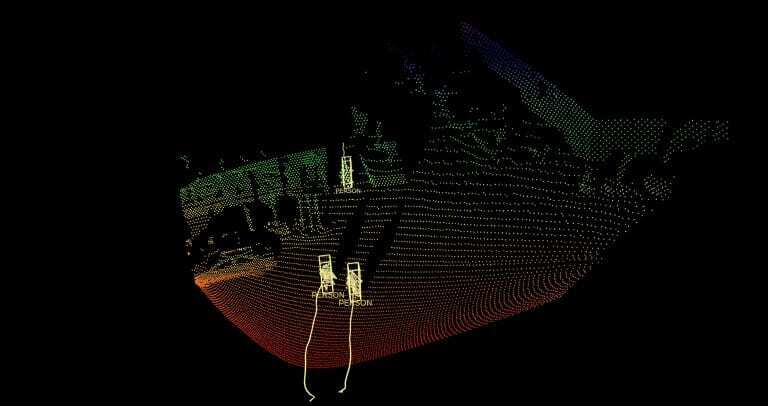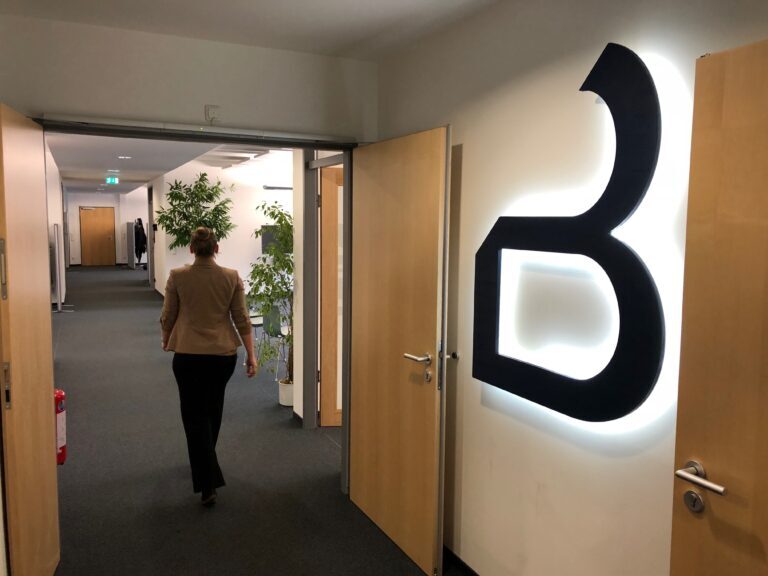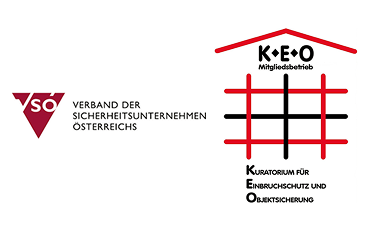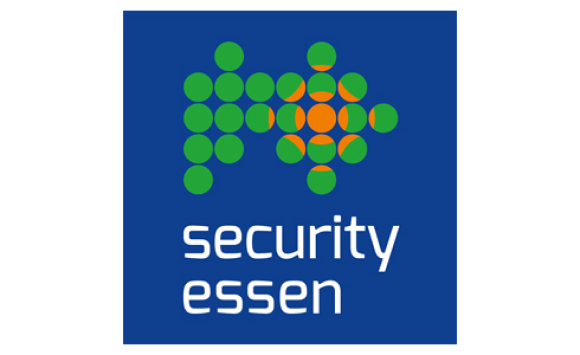A conversation with Dr Mathias Müller, Blickfeld founder and CEO.
Can you introduce yourself in a few sentences?
I’ve always had a great interest in technology: building and creating things – that fascinates me. This certainly also influenced my choice of studies, which fell on electrical engineering and physics. After my doctorate in optical metrology, I was faced with doing a postdoc or co-founding a start-up. My mother passed on her entrepreneurial spirit to me, so I decided to combine engineering and entrepreneurship and co-founded fos4X. I accompanied the development of the company, which manufactures fiber optic sensors, for six years and was able to gain profound experience in building and managing a business. Shortly afterward, in 2017, we founded Blickfeld.
What appeals to you about founding a company?
My fascination with technology doesn’t stop at getting involved with the subject matter and developing something. I want to see the technology in operation, achieve something with it and change things. It all starts with a good idea, and the next step is to find out whether this idea can be implemented and marketed. The exciting thing for me is when it becomes clear that it could work, and you go all in, take the leap of faith, and bet on the technology.

What are the very first steps in technology development?
The most important and first step is to understand the requirements for the technology as well as for the product. With this clear objective, the feasibility of the original idea can be tested.
At Blickfeld, it started with the idea of redeveloping the MEMS components. To do this, we looked at the optical requirements, and it quickly became clear what we needed – a large mirror with a wide deflection angle.
What are the key learnings you’ve taken away from founding Fos4X?
It was a huge advantage that Rolf Wojtech and I could bring the experience of having already founded a start-up to the start of Blickfeld. We founded fos4X with a strong technical perspective and then had to learn step by step about how a company works in detail, how to build teams, and which roles should be filled at what time. Consequently, we were able to apply all of this is extremely valuable knowledge to Blickfeld right away and didn’t have to acquire it from the ground up again.
We also benefited from our experience in operational matters. Questions such as “How does communication work in the company?” or “What tools do we need for collaboration?” were answered quickly because we were able to fall back on tried and tested methods and tools.
What falls within your duties as CEO?
My role as CEO has changed a lot through the various stages of Blickfeld. In the beginning, I took on more of a CTO role, as the focus was naturally very much on technology. Over time, the role evolved into the typical CEO tasks with executive management and strategy topics.
Since the summer of 2020, I have been sharing the executive management tasks with our COO, Terje Noevig.

What has been the biggest challenge so far for Blickfeld as a company and you as Blickfeld’s CEO?
For Blickfeld as a company, there were two significant make-or-break situations, especially at the very beginning. First and foremost, it was clear that we would not be able to develop such technology without funding. So, the closing of the first round of financing was an important milestone. The second challenge was to prove the technical feasibility of the product. When we presented the MVP, which was the first working LiDAR sensor based on our technology, it was evident we were on the right track.
For me as CEO, the Corona pandemic was a big challenge. Tech startups thrive on their culture, on the spirit of working closely together on a product and seeing it become something great. But this kind of close physical collaboration now suddenly posed a risk to employees. I thought a lot about how we could continue to work together under these entirely new circumstances and how we could transfer this culture to the digital sphere. And above all, how we could protect the employees who had to continue coming into the office because they were working with equipment that they didn’t have at home. Answering these questions and creating a concept that worked was a huge challenge.
Fortunately, it turned out that we work so well as a team that even the home office situation didn’t hurt our productivity. Of course, things get bumpy from time to time, but we could move forward with many projects even under these unfamiliar conditions.
Where do you see the most significant technological challenge in the manufacturing of LiDAR sensors? Where do you see the greatest potential?
LiDAR is not a new technology, but there has been a real hype in its development in recent years. This is because some companies now realize how great the potential of the technology is for many areas and where high-resolution LiDAR sensors can be integrated to create added value.
However, to get into widespread use, the issue of production scalability needs to be addressed, and in my view, that is the biggest challenge for many players. The question is not only how to build the most powerful LiDAR but the one that scales best. With our sensor design, we have solved this extremely technically challenging task.
I see the most significant potential in the LiDAR market as offering solutions to customers. LiDAR can bring great improvements in so many application areas, but it is not yet established as a technology in most industries. Therefore, it is of great advantage to look at different use cases and offer a combination of hardware and software for these that can be operated without a great deal of LiDAR experience or expertise. Ultimately, users should simply have the information they need at their disposal. How much material is stored in the warehouse? How long is the waiting time at the check-in counter? Where is the next free parking spot?
What developments do you see coming in the LiDAR industry shortly?
One development that can currently be observed is that the suppliers of laser and detector components have recognized the huge potential of the LiDAR market. Until now, they have produced standard components that are used in LiDAR sensors as well as in infrared cameras, for example. Now many manufacturers have started to develop components specifically for the LiDAR market, which can also have a positive impact on sensor performance. In fact, we are also working with manufacturers here and thus supporting this development.

Which industry will LiDAR change the most?
For a long time, it was thought that the field of autonomous driving would be the primary application for LiDAR. That is certainly true, as LiDAR plays an integral role in autonomous driving. But what has also emerged in recent months and years is that many additional industrial sectors hold profound potential.
Just as an example, the smart infrastructure market, has great economic potential, and LiDAR technology adds real value by providing the depth of data required.
What is your vision for Blickfeld?
I’m motivated by the potential of our solution, the many applications where we really make a difference compared to the traditional technology. My vision is to provide solutions for these applications and making sure that a Blickfeld sensor can be found in every single one of them.
Our software solution also enables the second part of my vision: Blickfeld LiDAR for everyone! Our software is intuitive to operate, and the users don’t need to be specialists in solving a particular application problem.
In the long run, I see our sensor technology also in the consumer area! But that is only the second step.
What is your favorite Blickfeld tradition?
It is anchored in our vision that everyone at our company is allowed to make mistakes; that is only natural and human. However, in some cases, these do not go completely unpunished! If, for example, a mishap occurs or the computer is not locked when leaving the workplace, the colleagues are “caked” i.e., they have to bake a cake and bring it to the office. Over the years, we’ve had the most amazing creations in the kitchen, even I’ve had to get baking a few times! This is definitely my favorite tradition, because who isn’t happy about a piece of cake with their morning coffee?
What has been the most exciting thing you’ve experienced at Blickfeld so far?
The list of exciting experiences is long and would take ages! Off the top of my head, of course, are the very first technical successes, which made it clear that the implementation of our ideas really works.
Other moments that stand out are the parties we held before the pandemic. Experiencing and fostering team spirit outside the office walls, celebrating our vision and successes has always been a source of great pleasure for me.

